Designed by Sudanese architect, artist, and computational designer, Elshareef Kabbashi, “The Disconnect-to-Connect” proposal for The Retal International Competition for Mosque and selected among the shortlisted projects in May 2022. The project is located in the city of Dammam, Saudi Arabia. It emerges as an icon, expressing new modernity and a new concept of mosque architecture.
Quarantines, lockdowns, and isolation have pushed millions of Muslims to pray in their homes, and mosques were left empty. What if another pandemic occurred? Can mosques become the best place where we pray, socialize, and thrive in a direct connection with nature (Physically) and God (Spiritually)? Can it become our way to disconnect from the city life’s bustle to recharge and reconnect to nature – a synergy between people and nature?
The key objective of this design was to make a modern mosque that can afford a community space for both Muslims and guests, moving away from the traditional forms of Islamic architecture.
In this proposal, the traditional mosque is reimagined and construed in a modern, bold, and creative way using local materials. The challenge was to avoid the characteristic design of mosques and to explore the implications of making the mosque transparent and open. The entire mosque concept and the focal point of this mosque design are its structural facades that resemble the poetic of all Islamic architectural archetypes, the mashrabiya.
Light will filter through the recycled wood and straw, creating playful shadows across the interior. The semi-transparent mosque structure also demystifies the mosque non-Muslim viewers, serving as space for cross-cultural connection and community gathering.
If you want to learn more about Elshareef Kabbashi’s works, you can check out Computational Design: NEXT 10 by PAACADEMY.
Plans
This one-floor rectangular mosque provides areas for 540 male and female worshipers to congregate. It distinguishes a central worship space with a parametric sustainable dome structure, which takes visual cues from the aesthetics of Islamic architecture in a contemporary way.
An understanding of the mosque influenced the design approach behind this layout as a multifunctional area for the community to congregate and socialize after pray times; in this way, it is seen as an extension of its immediate environment. The courtyard (Sahan) is linked with the male prayer hall. It is used as an overspill area during Friday pray or during Ramadan and Eid.
Defining access into the prayer hall through the courtyard was designed to create a spatial shift that gradually takes worshippers from an oasis-like effect that emphasizes the notion of the mosque as a communal space to serene worship space.
Site
Mosques are a unique form of rural retreat, taking inspiration from vernacular craft and local building traditions. In this proposal, the mosque is designed so that its natural surroundings become the most critical asset. At the same time, the structure blends itself into it. The idea is that the building, landscape, and nature merge, causing as little impact on the environment as possible. Materials aim to blend the whole scenery. Besides its link to nature, the mosque is also a perfect place to relax and reconnect with God in an engaging environment.
The Minaret
A 35-meter tall minaret tower is situated beside the mosque, next to the main entrance, to serve as an iconic landmark for the city. The minaret signifies the mosque’s presence in the broader landscape of the city.
The mosque’s approach is rooted in two concepts: the mosque brings us, the community, and guests closer to nature in a symbiotic way, and the reflection of the current times and an opportunity for the future of the mosque architecture.
A row of palm trees, pergolas, and a minaret rise from the open-air space, which is also intended as a place to socialize.
While male worshippers could enter their prayer hall from both sides through the open courtyard (Sahan), a separate entrance for female prayers is also dedicated, leading to their prayer hall.
Materials
The building’s unique structure and form were designed to be experienced and observed, allowing the guests to perceive and appreciate the mosque from various dynamic vantage points. The construction materials strongly relate to the local environment, nature, and sustainability. The walls are constructed using compressed earth blocks, straw, and recycled wood. The roof and walls are supported with a structure of the same material.
The gap in the roof and walls give space for natural ventilation.
Light
The play of light and shadow animates the space and activates the senses; in this way, an aspect of Islamic tradition is revealed through the simple use of local recycled materials. Light also plays another role, and it calls attention to the sun’s movement as a catalyst in the changing prayer times, the constant motion becoming a visual reflection of their daily cycle.
Project Info
Project Title: Disconnect to Connect Mosque
Architect: Elshareef Kabbashi
Visualization: Lumion Render + Adobe Photoshop
Tools Used: Rhino 3D, Grasshopper, Lumion Render,
Year: May 2022
Status: Concept Design
Organizer: Abdullatif Al Fozan Award for Mosque Architecture, AIA
Competition Title: Retal Mosque Design Competition – RMDC
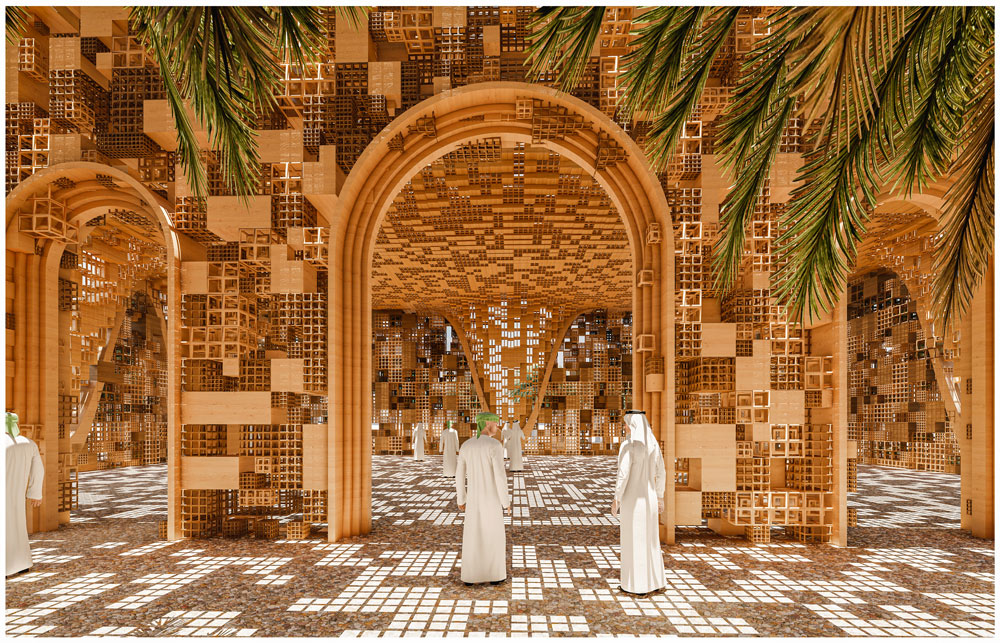
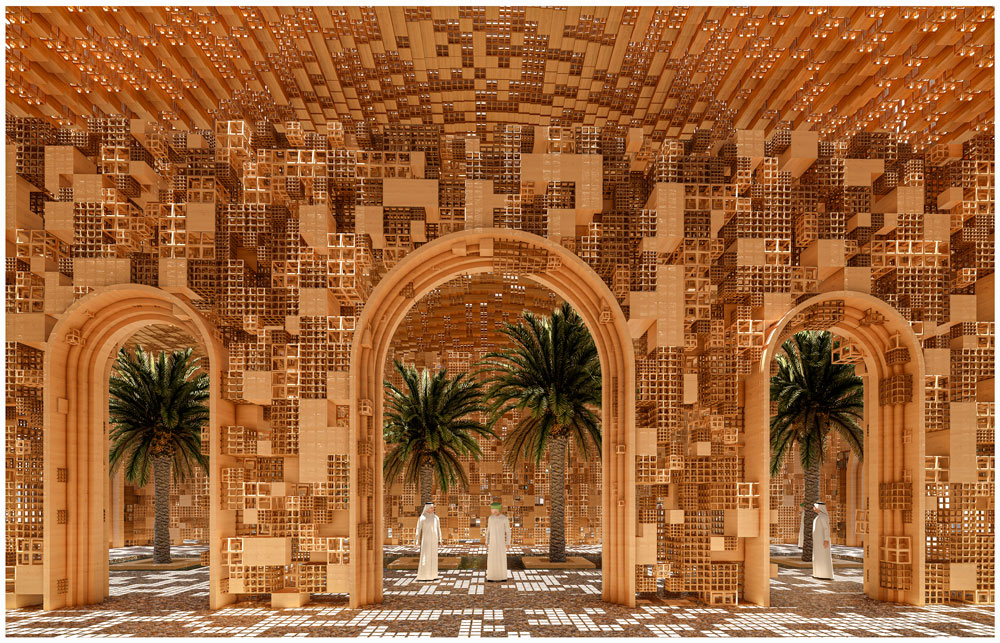
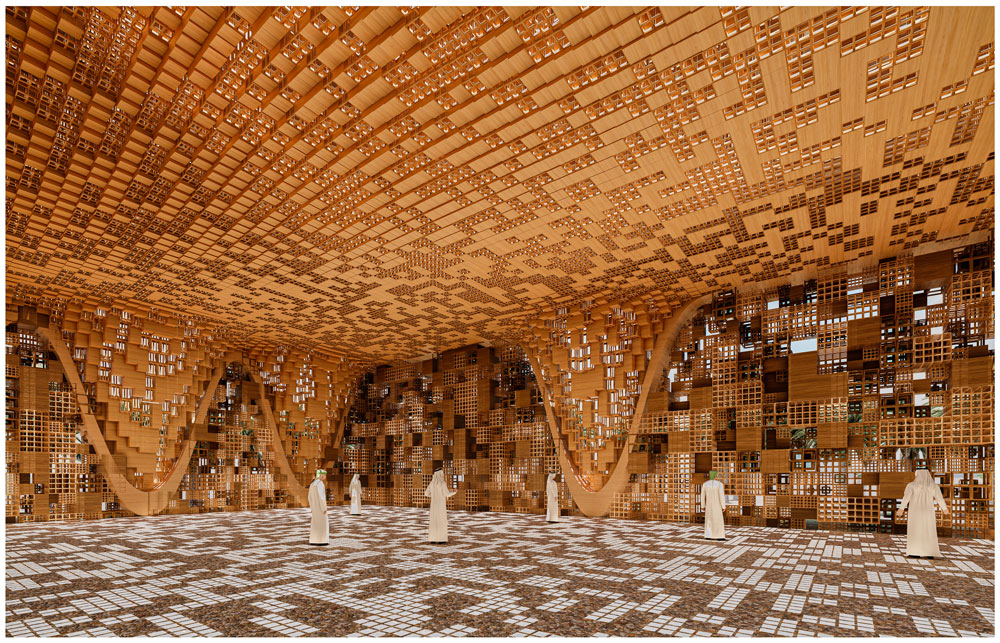
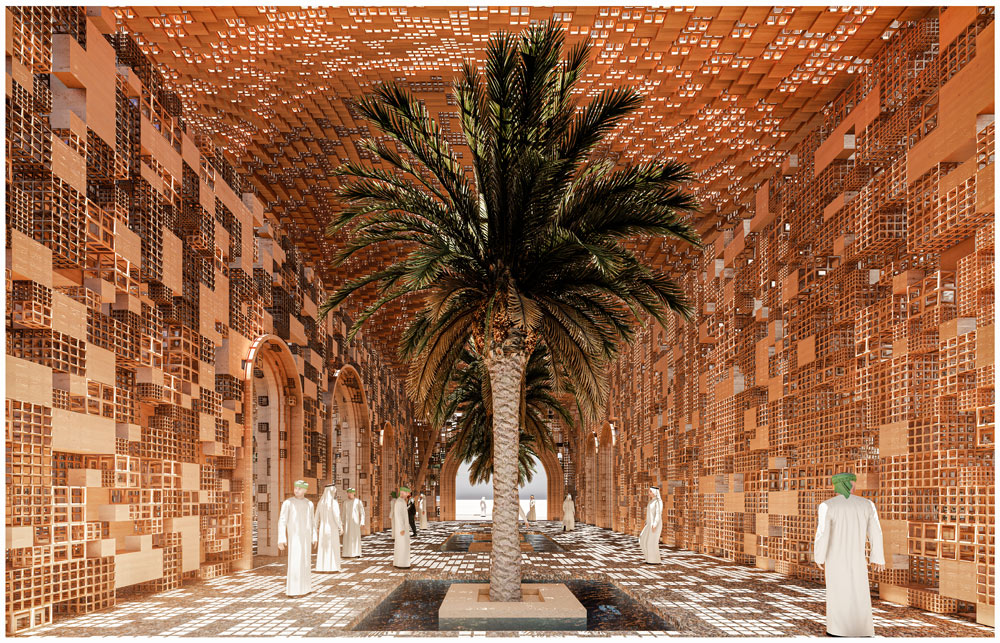
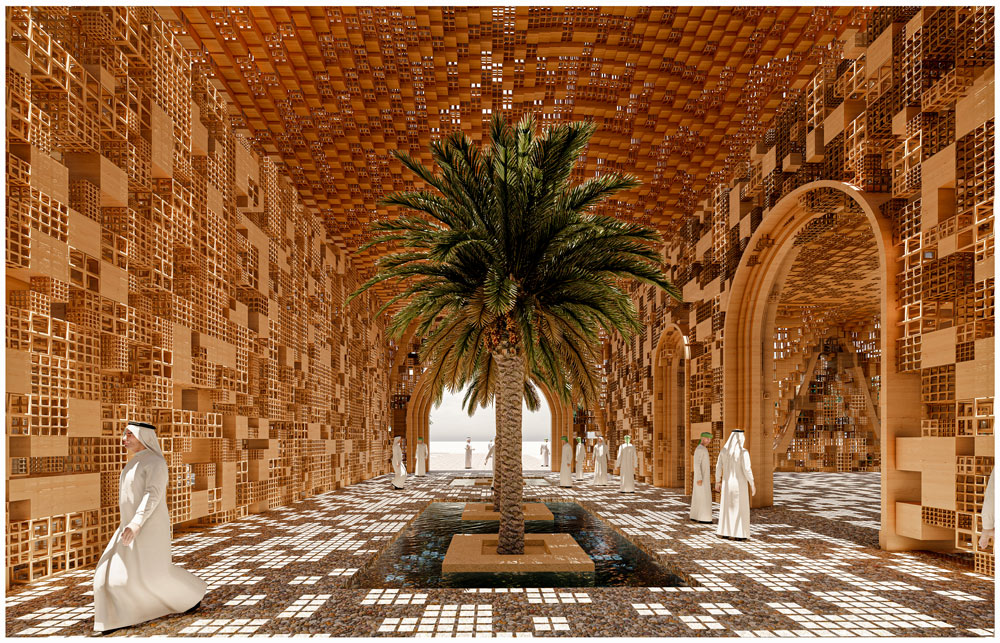
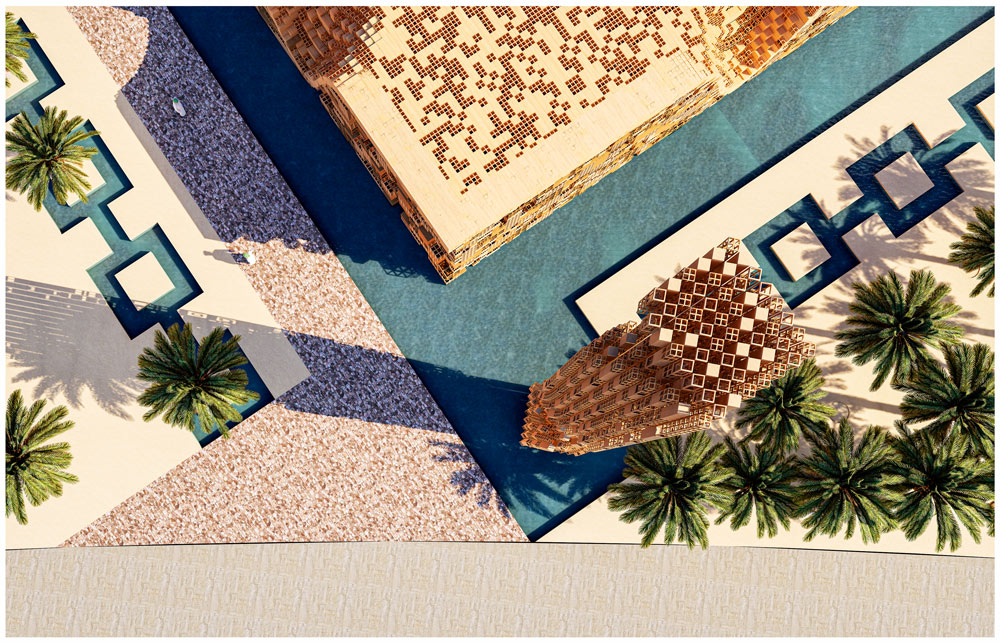
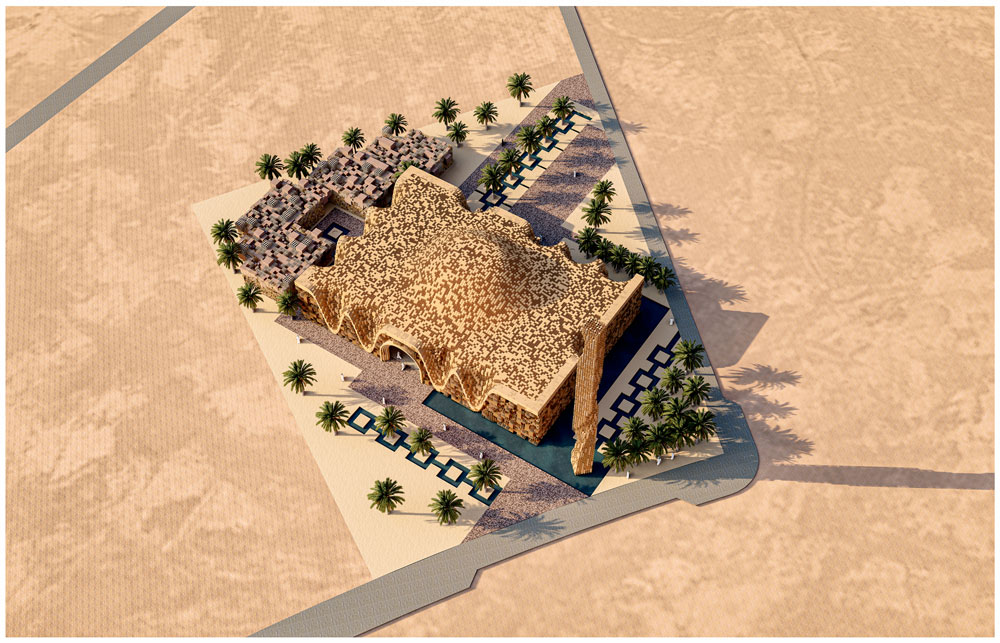

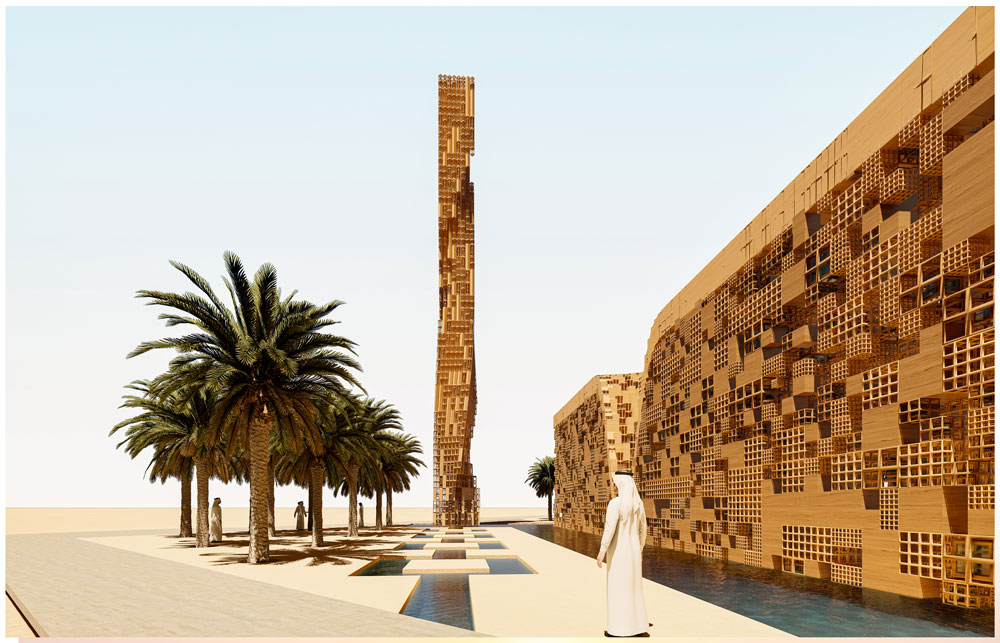



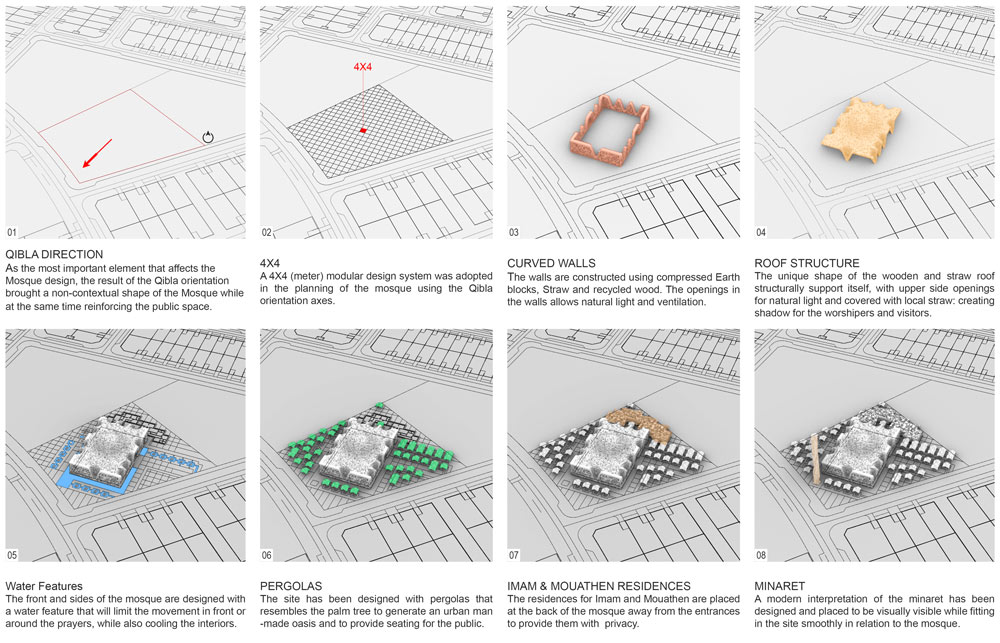
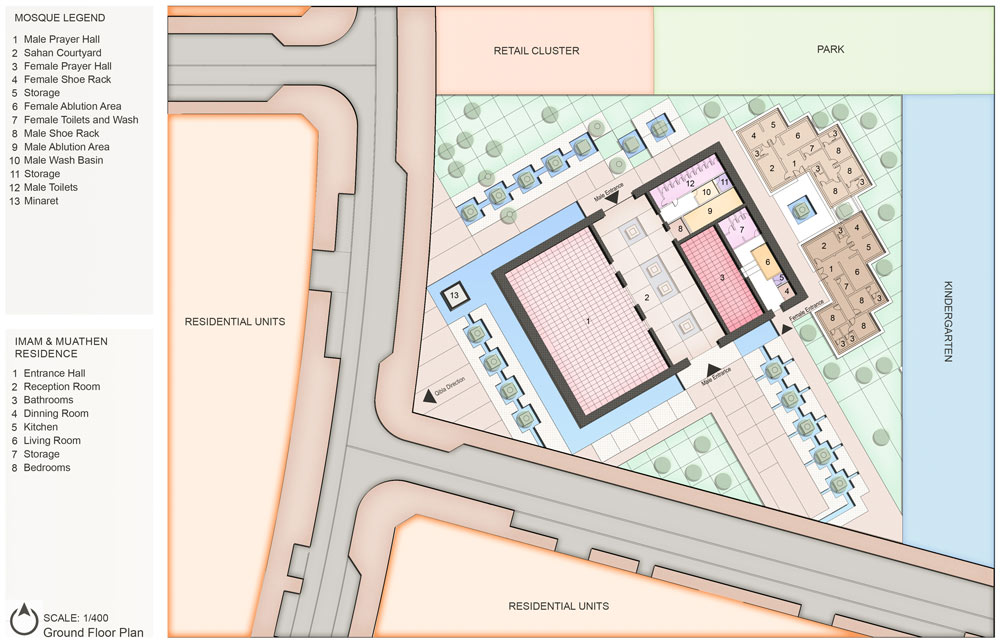




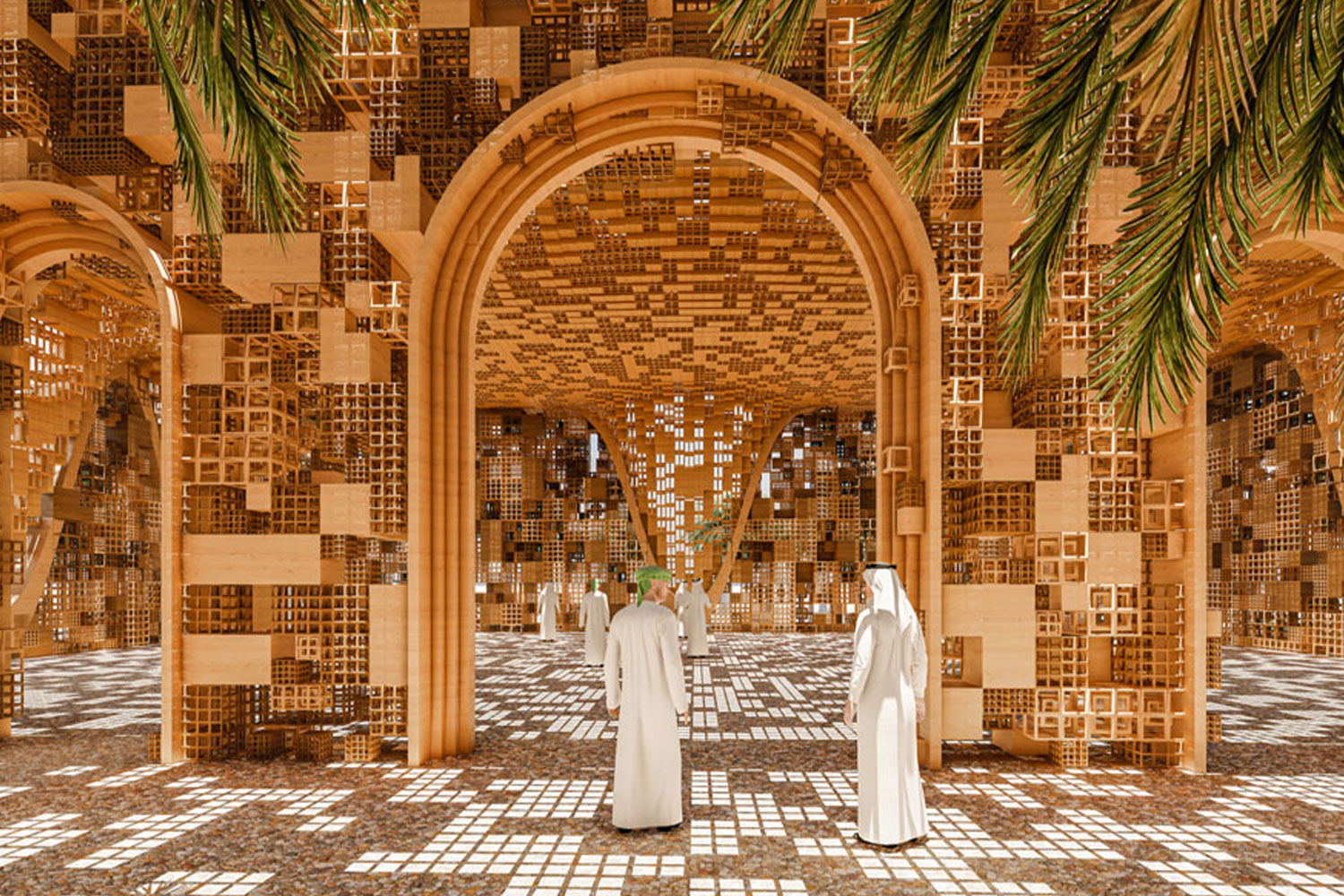














Leave a comment